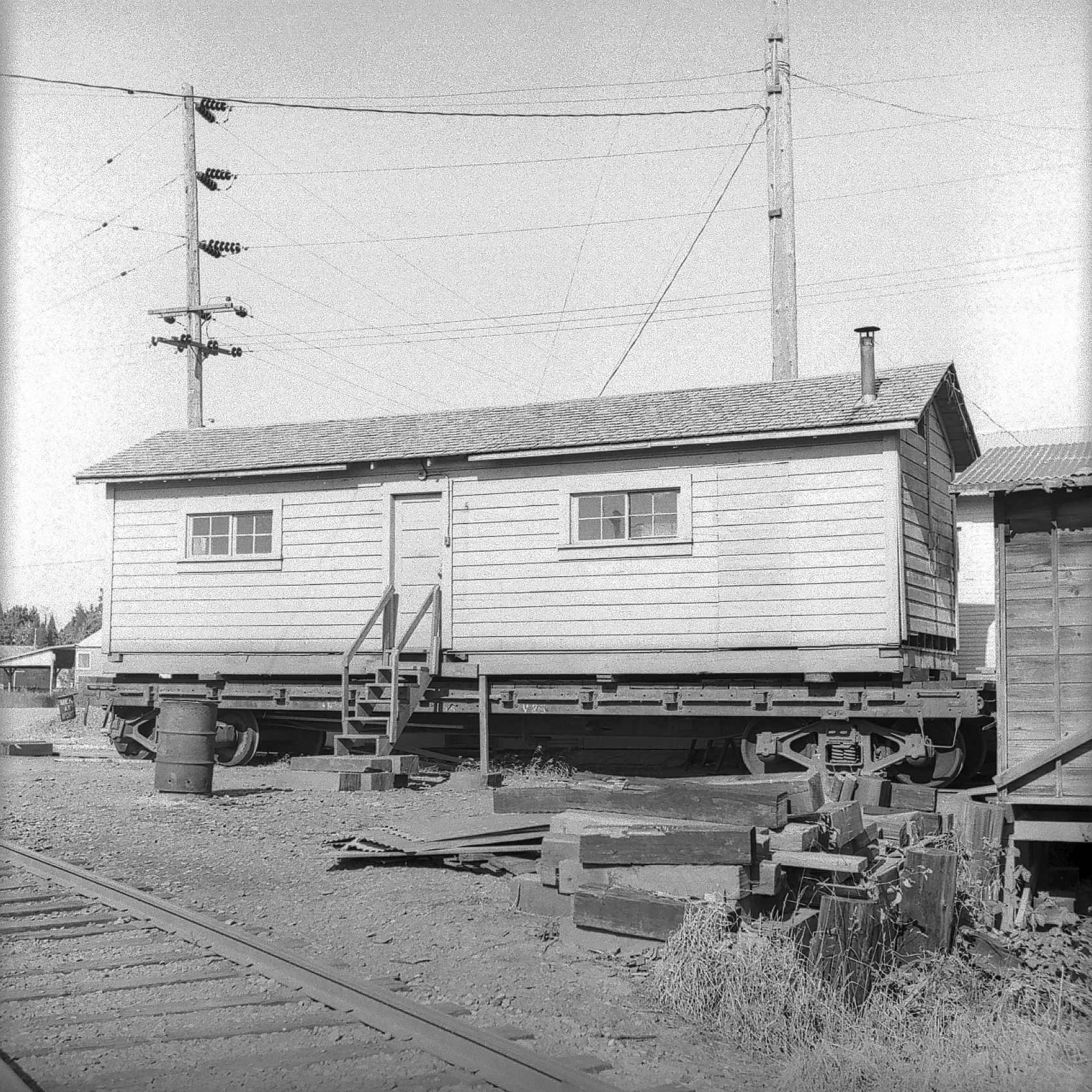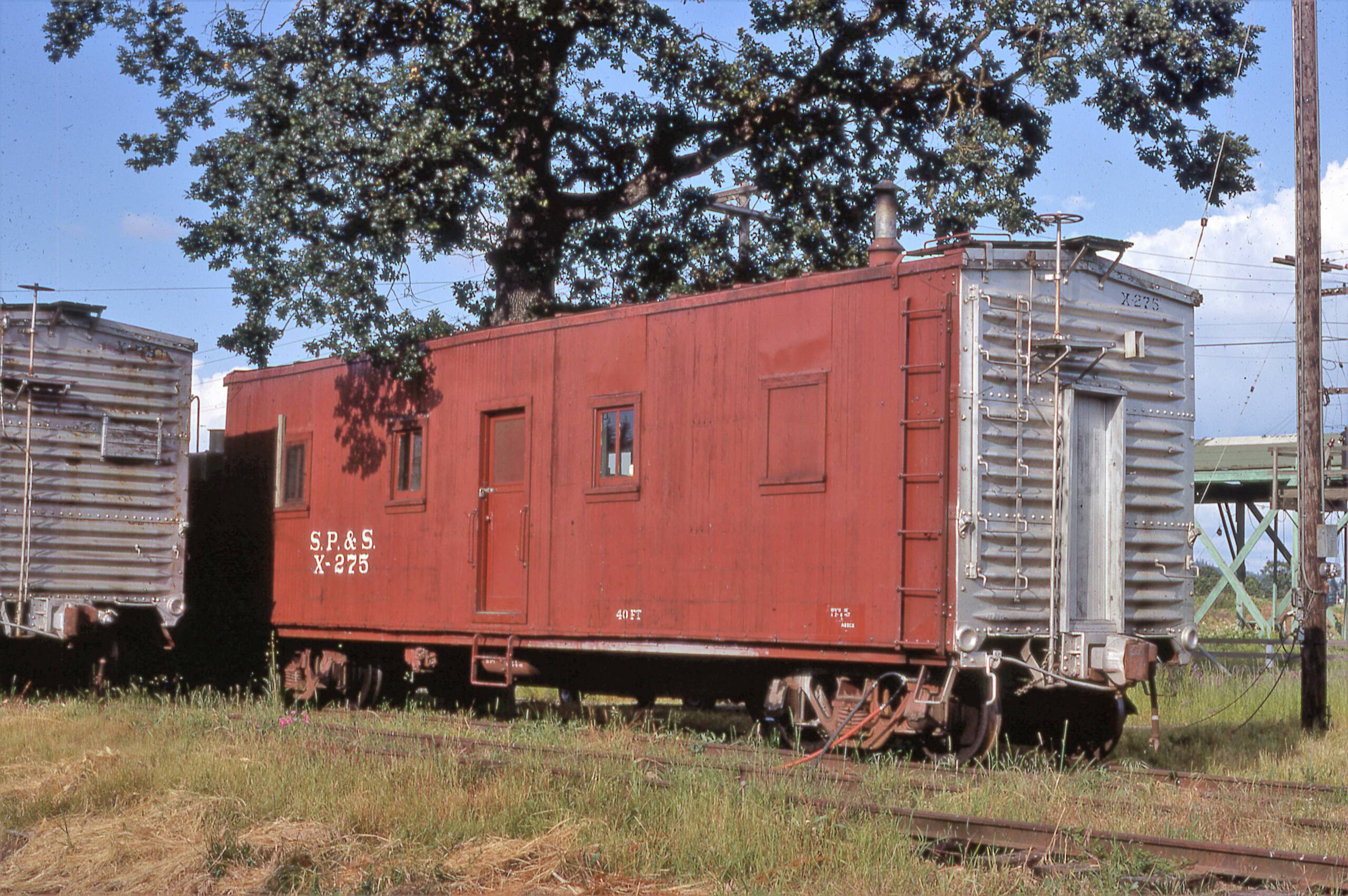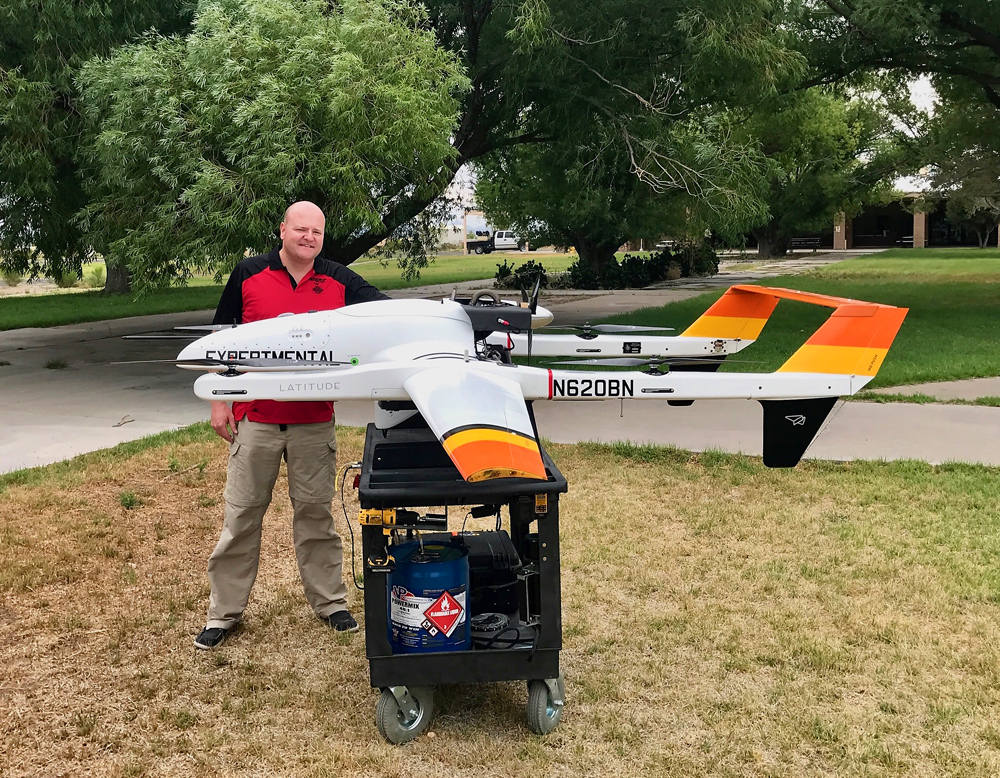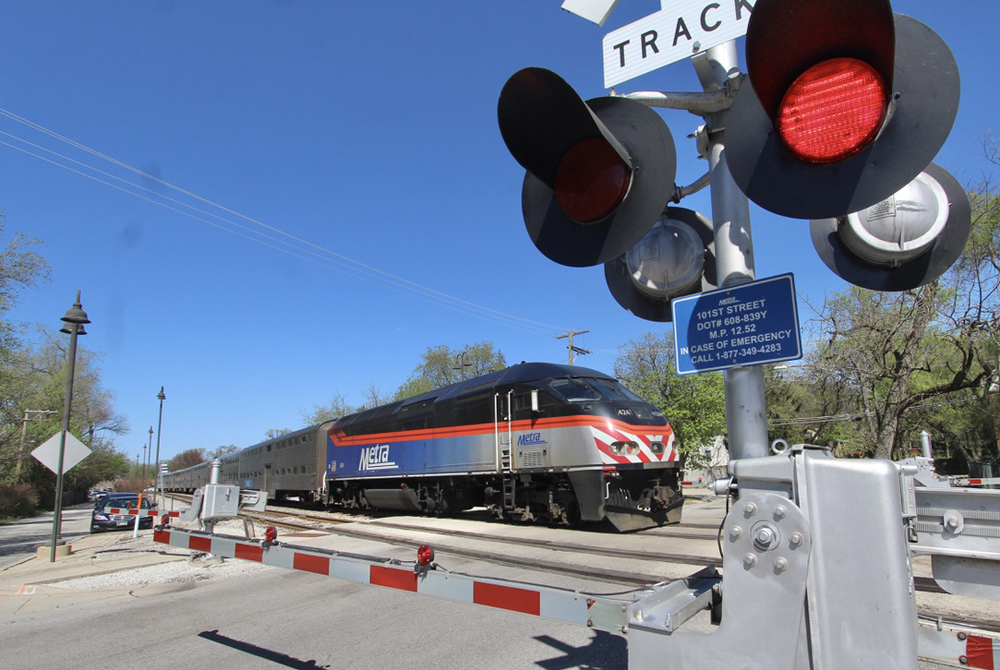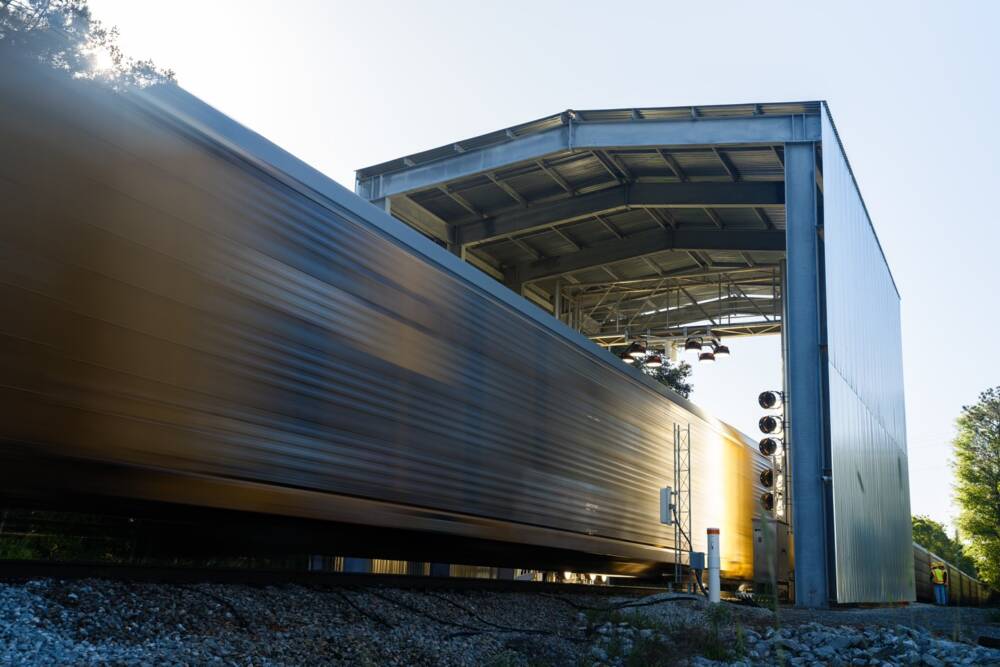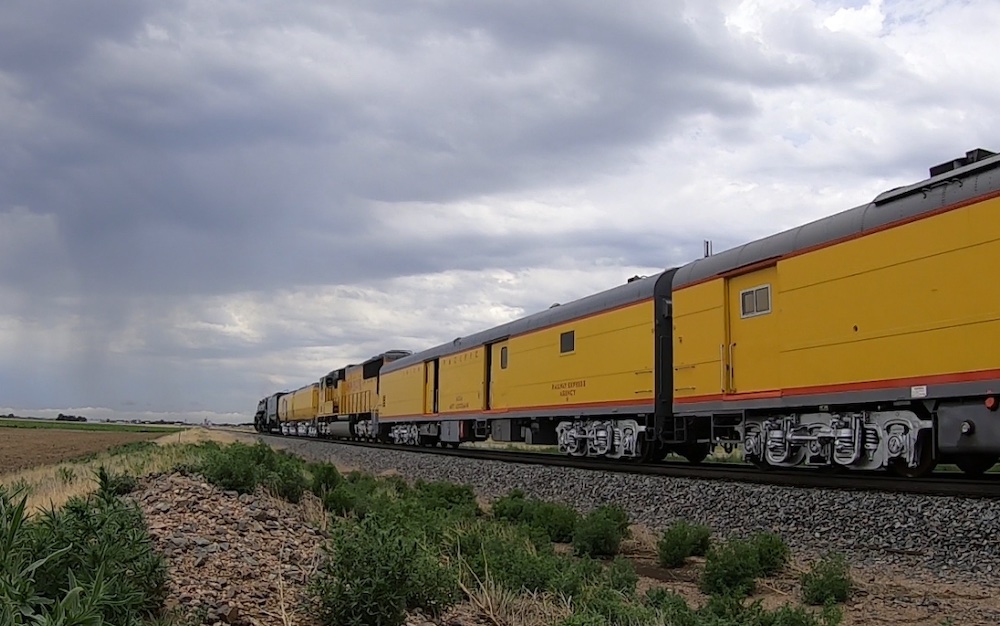Outfit cars

Cars equipped with facilities for feeding and housing construction and maintenance employees in the field are known as outfit cars or camp cars. Over the years they have taken a number of forms.
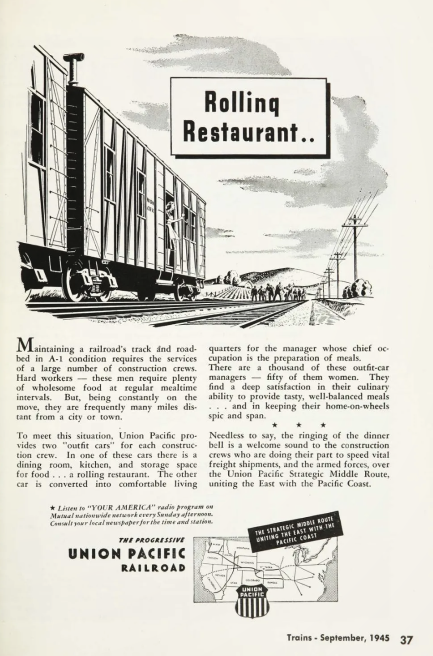
Because outfit cars are not revenue-producing equipment, railroads have tended to not spend much money on them, and a common approach has been to create them from obsolete rolling stock originally built for other functions. Many outfit cars began life as boxcars, whose simple construction, uncluttered interior, and sheer numbers made them good candidates for conversion.
Such cars would have windows, small doors, a sleeping area, a kitchen, and a sanitary facility installed during conversion.
Old passenger cars, being intended for human occupancy in the first place, have also been used extensively as outfit cars, sometimes retaining their original interior fittings, depending on the type of car used.
Some modern outfit cars have been purpose-built; these are essentially flatcars carrying a modified mobile home design.
Outfit cars are not as common as they once were. Railroads are less inclined to accord them the special handling and maintenance they require, and work crews are often simply put up in nearby motels where they must travel by road to the job site.
Find this interesting? Check out “Outfits I have known” by Michael J. McLaughlin from The Way It Was section in Classic Trains’ Spring 2001 issue.
Note: The Colorado Railroad Museum also has an interesting video on outfit cars.
